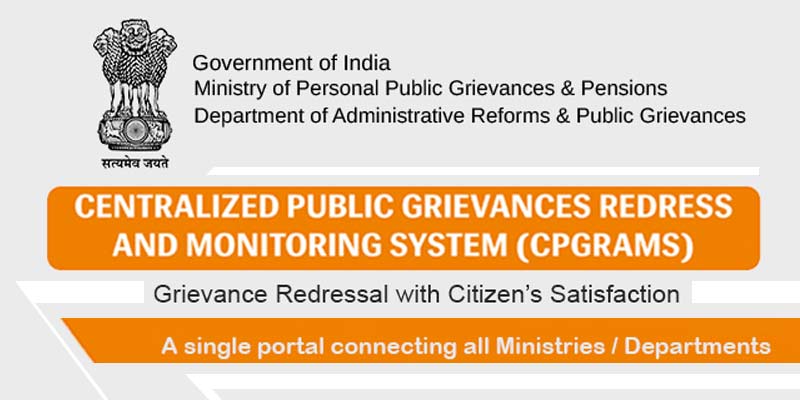- India
- Jun 24
Average disposal time of public grievances reduced to 16 days
• Union Minister Jitendra Singh launched the Grievance Redressal Assessment and Index (GRAI) 2022.
• The minister said there has been a decline of almost 50 per cent in the average disposal time for central ministries/departments from 32 days in 2021 to 16 days in 2023.
• The adoption of the 10-step CPGRAMS (Centralised Public Grievance Redress and Monitoring System) reforms resulted in a significant decrease in the average time for grievance disposal, he said.
• CPGRAMS allows citizens to raise grievances against central and state governments online.
• The reforms have also positively impacted the disposal of state public grievances cases on the CPGRAMS portal, crossing 50,000 cases per month since September 2022.
Why is grievance redressal important?
• Grievance redressal is an important function of an efficient, responsive and transparent service provider. The basic purpose behind a grievance redressal mechanism is to provide a platform to the citizens to register their complaints related to various services they receive from the service provider, voice their opinions and provide feedback on various services rendered by the service provider.
• An efficient grievance redressal mechanism functions as a bridge to minimise the communication gap between the service provider and the end-user and serves as a means to measure the efficiency and effectiveness to the service provider, as it provides important feedback for corrective measures.
• The government is providing a number of services through its central ministries and departments to the citizens with an endeavour to provide citizen centric governance.
• One of the keys to measure the quality of service provided is to look into how satisfied citizens are and how well their issues are heard and resolved.
• The mechanism serves as catalyst between the government and the citizen and provide citizens a platform through which they can get their grievances redressed in a timely and transparent manner.
• It also serves as a mean to provide feedback to the ministries and departments about their policies, procedure and functioning of the administration.
• An effective grievance redressal mechanism is essential for central ministries and departments in India to ensure accountability, transparency, trust-building, and improved service delivery.
• Having a robust grievances redressal system helps the government to assess its performance and make amends to the processes and policies if these are identified as the root causes of grievances.
• This is done with the overall intent of providing ‘minimum government and maximum governance’. Weeding out corrupt practices and rent seeking opportunities is an outcome of a robust grievance redressal system.
• While it is widely accepted that managing consumer complaints is crucial for service providers, the institutionalised grievance redressal mechanisms have the potential in fostering next generation reforms.
• The Department of Administrative Reforms and Public Grievances (DARPG) is the nodal agency of the government of India for administrative reforms as well as for redressal of public grievances relating to the states and UTs in general, and grievances pertaining to central government agencies in particular.
Grievance Redressal Assessment and Index
• The Grievance Redressal Assessment and Index (GRAI) 2022 was conceptualised and designed by the DARPG based on the recommendation of the Parliamentary Standing Committee of Ministry of Personnel, Public Grievances and Pensions with an objective to present organisation-wise comparative picture and provide valuable insights about strengths and areas of improvement regarding grievance redressal mechanism.
• As many as 89 central ministries and departments were assessed and ranked based on a comprehensive index in the dimensions of efficiency, feedback, domain and organisational commitment and corresponding 12 indicators.
• To compute the index, data between January and December 2022, was used from the CPGRAMS.
• As part of GRAI, ministries and departments are grouped in three groups based on the number of grievances registered in calendar year 2022 at CPGRAMS:
i) Group A for those registering more than 10,000 grievances.
ii) Group B for those receiving grievances from 2,000 to 9,999.
iii) Group C for those getting less than 2,000 plaints.
• The Department of Posts, Department of Financial Services (Pension Reforms) and Department of Land Resources have topped the rankings in Group A, B and C respectively.
• The Unique Identification Authority of India (UIDAI) and ministry of labour and employment are at second and third position respectively in Group A category.
• The Department of Legal Affairs and ministry of mines have got second and third rank respectively in Group B.
• In Group C, the Department of Pharmaceutical and Department of Public Enterprises are at second and third position respectively.
• Out of the total 12.87 lakh grievances received during 2022 at CPGRAMS, about 75 per cent have been resolved within the prescribed timeline of 30 days by the ministries and departments with the ministry of parliamentary affairs performing the best in this indicator.
Manorama Yearbook app is now available on Google Play Store and iOS App Store

